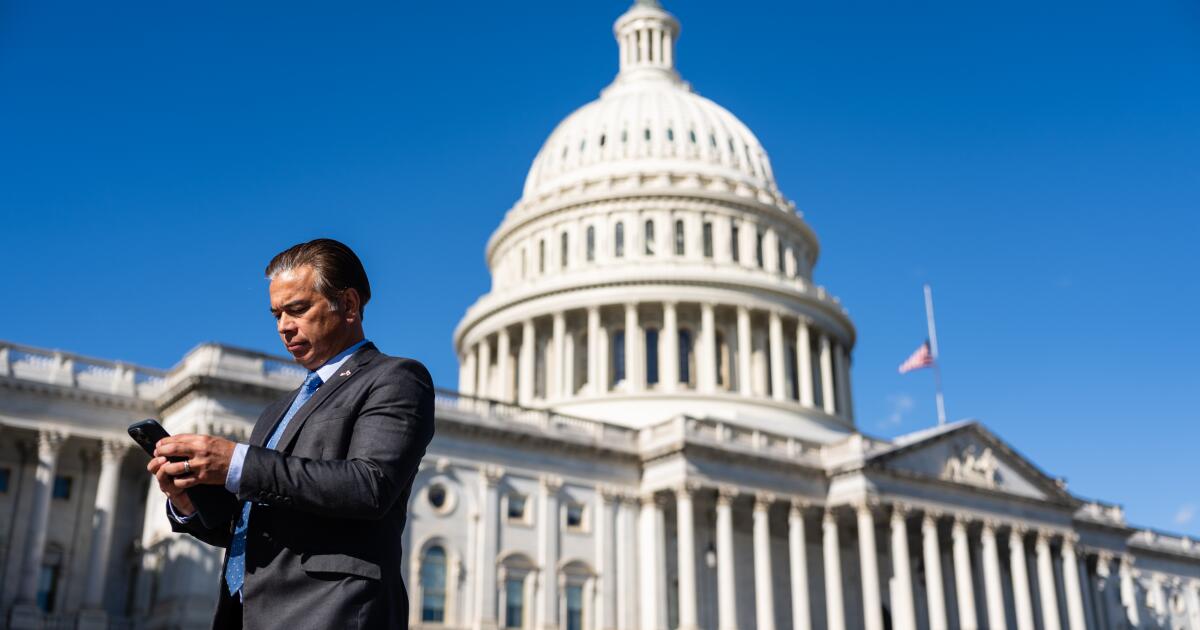Finance
J.P. Morgan: Private, Digital Identities Key to Scaling Financial Blockchains | PYMNTS.com

What can blockchain technology do for financial services in a friendly regulatory environment?
With a new president coming in 2025, the ecosystem is about to find out. Donald Trump has promised to the industry that he — the U.S. Securities and Exchange Commission (SEC) under his administration — would be more crypto-friendly.
Against a backdrop where traditional financial players are warming their cold shoulders to the blockchain space, when banks are discussing real-world use cases for crypto, they tend to default to stablecoins for payments.
For example, on Thursday (Nov. 7), UBS announced it had created and piloted UBS Digital Cash, a blockchain-based payment solution, while a day earlier on Wednesday (Nov. 6), J.P. Morgan announced a significant enhancement to its own blockchain platform, recently rebranded from Onyx to Kinexys.
But that’s not all J.P. Morgan announced. The banking giant also released a whitepaper entitled Project EPIC: Fueling Tokenized Finance with On-Chain Enterprise Privacy, Identity, and Composability (EPIC).
The paper, as the title implies, explores the use of blockchain technology to enhance privacy, identity and composability within financial ecosystems.
“Our aim is two-fold: to articulate the challenges and opportunities in this space and to catalyze industry-wide dialogue and action,” the bank said.
As the regulatory landscape evolves, that appears to be an increasingly common view held by traditional financial institutions (FIs).
Read more: A Pro-Crypto President: What Trump 2.0 Holds for Blockchain’s Future
Unlocking the Full Potential of Tokenized Assets
One of blockchain technology’s core features is transparency — a double-edged sword in finance. The open nature of blockchains offers a high degree of trust and visibility, enabling anyone to verify transactions. However, the lack of privacy presents a significant obstacle for many potential users, particularly institutional participants wary of publicly sharing sensitive financial information.
In a world where sensitive financial data and transactions may be increasingly exposed to public scrutiny on-chain, there’s a pressing need to address privacy and identity challenges within crypto.
Per the J.P. Morgan paper, “the lack of mature, on-chain cryptographic privacy solutions, coupled with the absence of consensus on implementing privacy-preserving digital identity, continues to create operational friction in tokenized asset interactions. While these challenges are not entirely gating — as demonstrated by the $2-3B raised through on-chain funds and approximately $200B in stablecoins, protocol treasuries and public chain lending protocols — solving for them could broaden adoption.”
In an interview with PYMNTS posted Friday (Nov. 8), Raj Dhamodharan, executive vice president of blockchain and digital assets at Mastercard, explained that the real potential of blockchain can only be realized when users can interact with the network in a trusted, verifiable manner.
“But while the underlying infrastructure enables you to transfer value, it doesn’t really lend itself to doing so in a very easy way,” he added, noting that the “experiences are hard.”
As PYMNTS Intelligence’s latest report revealed, regulated industries, including healthcare and financial services, must adhere to numerous requirements, such as know your customer (KYC), anti-money laundering (AML) and data privacy regulations. Blockchain could help these industries in that regard.
Read more: Visa, PayPal and Others Could Bring Utility and Legitimacy to Stablecoins
How Solving Privacy and Identity Challenges Could Broaden Adoption
“Privacy-preserving, reusable digital identity solutions are fundamental to unlocking tokenization’s full potential, enabling streamlined onboarding, real-time verification, and programmable compliance,” the J.P.Morgan report noted.
However, this journey requires a collaborative effort from developers, regulators and industry stakeholders to ensure that these solutions are both technically feasible and regulatory compliant.
In the near term, the momentum of stablecoins, protocol treasuries and on-chain lending demonstrates the system’s viability.
PYMNTS recently sat down with Ran Goldi, senior vice president, payments and network at Fireblocks, and Nikola Plecas, head of commercialization, Visa Crypto, to dissect the benefits and myths surrounding blockchain-based payments, how to think about real-world applications and how to unlock new revenue streams using blockchain. Stablecoins, the panelists said, offer advantages over existing payment systems, including native programmability, strong auditability, fast settlement, self-custody options and seamless interoperability.
However, as tokenization becomes more integral to the financial sector, privacy and identity will transition from “nice-to-haves” to essential requirements. Meeting these needs will be key to fostering a secure, scalable and inclusive ecosystem where tokenized assets can truly thrive.

Finance
The case against saving when building a business

Finance
This Is the Best Thing to Do With Your 2026 Military Pay Raise

Editor’s note: This is the fourth installment of New Year, New You, a weeklong look at your financial health headed into 2026.
The military’s regularly occurring pay raises provide an opportunity that many civilians only dream of. Not only do the annual percentage increases troops receive each January provide frequent chances to rebalance financial priorities — savings vs. current standard of living — so do time-in-service increases for every two years of military service, not to mention promotions.
Two experts in military pay and personal finance — a retired admiral and a retired general, each at the head of their respective military mutual aid associations — advised taking a similarly predictable approach to managing each new raise:
Cut it in half.
In one variation of the strategy, a service member simply adds to their savings: whatever it is they prioritize. In the other, consistent increases in retirement contributions soon add up to a desirable threshold.
Rainy Day Fund
The active military’s 3.8% pay raise in 2026 came in a percentage point higher than retirees and disabled veterans received, meaning troops “should be able to afford the market basket of goods that the average American is afforded,” said Michael Meese, a retired Army brigadier general and president of Armed Forces Mutual.
While the veterans’ lower rate relies exclusively on the rate of inflation, Congress has the option to offer more; and in doing so is making up for recent years when the pay raise didn’t keep up with unusually high inflation, Meese said.
“So this is helping us catch up a little bit.”
He also speculated that the government shutdown “upset a lot of people” and that widespread support of the 3.8% raise across party lines and in both houses of Congress showed “that it has confidence in the military and wants to take care of the military and restore government credibility with service men and women,” Meese said.
His suggestion for managing pay raises:
“If you’ve been living already without the pay raise and now you see this pay raise, if you can,” Meese advised, “I always said … you should save half and spend half,” Meese said. “That way, you don’t instantly increase your spending habits just because you see more money at the end of the month.”
A service member who makes only $1,000 every two weeks, for example, gets another $38 every two weeks starting this month. Put $19 into savings, and you can put the other $19 toward “beer and pizza or whatever you’re going to do,” Meese said.
“That way you’re putting money away for a rainy day,” he said — to help prepare for a vacation, for example, “so you’re not putting those on a credit card.” If you set aside only $25 more per pay period, “at the end of the year, you’ve got an extra $300 in there, and that may be great for Christmas vacation or Christmas presents or something like that.”
Retirement Strategy
Brian Luther, retired rear admiral and the president and chief executive officer of Navy Mutual, recognizes that “personal finance is personal” — in other words, “every situation is different.” Nevertheless, he insists that “everyone should have a plan” that includes:
- What your cash flow is
- Where your money is going
- Where you need to go in the future
But even if you don’t know a lot of those details, Luther said, the most important thing:
Luther also advised an approach based on cutting the 3.8% pay raise in half, keeping half for expenses and putting the other half into the Thrift Savings Plan. Then “that pay will work for you until you need it in retirement,” Luther said. With every subsequent increase, put half into the TSP until you’re setting aside a full 15% of your pay.
For a relatively young service member, “Once you hit 15%, and [with] the 5% match from the government, that’s enough for your future,” Luther said.
Previously in this series:
Part 1: 2026 Guide to Pay and Allowances for Military Service Members, Veterans and Retirees
Part 2: Understanding All the Deductions on Your 2026 Military Leave and Earnings Statements
Part 3: Should You Let the Military Set Aside Allotments from Your Pay?
Get the Latest Financial Tips
Whether you’re trying to balance your budget, build up your credit, select a good life insurance program or are gearing up for a home purchase, Military.com has you covered. Subscribe to Military.com and get the latest military benefit updates and tips delivered straight to your inbox.
Story Continues
Finance
Tech trade needs 2 things to remain 'in favor' this year

-

 Detroit, MI5 days ago
Detroit, MI5 days ago2 hospitalized after shooting on Lodge Freeway in Detroit
-

 Technology2 days ago
Technology2 days agoPower bank feature creep is out of control
-

 Dallas, TX4 days ago
Dallas, TX4 days agoDefensive coordinator candidates who could improve Cowboys’ brutal secondary in 2026
-

 Health5 days ago
Health5 days agoViral New Year reset routine is helping people adopt healthier habits
-

 Nebraska2 days ago
Nebraska2 days agoOregon State LB transfer Dexter Foster commits to Nebraska
-

 Iowa2 days ago
Iowa2 days agoPat McAfee praises Audi Crooks, plays hype song for Iowa State star
-

 Nebraska2 days ago
Nebraska2 days agoNebraska-based pizza chain Godfather’s Pizza is set to open a new location in Queen Creek
-

 Entertainment2 days ago
Entertainment2 days agoSpotify digs in on podcasts with new Hollywood studios





















